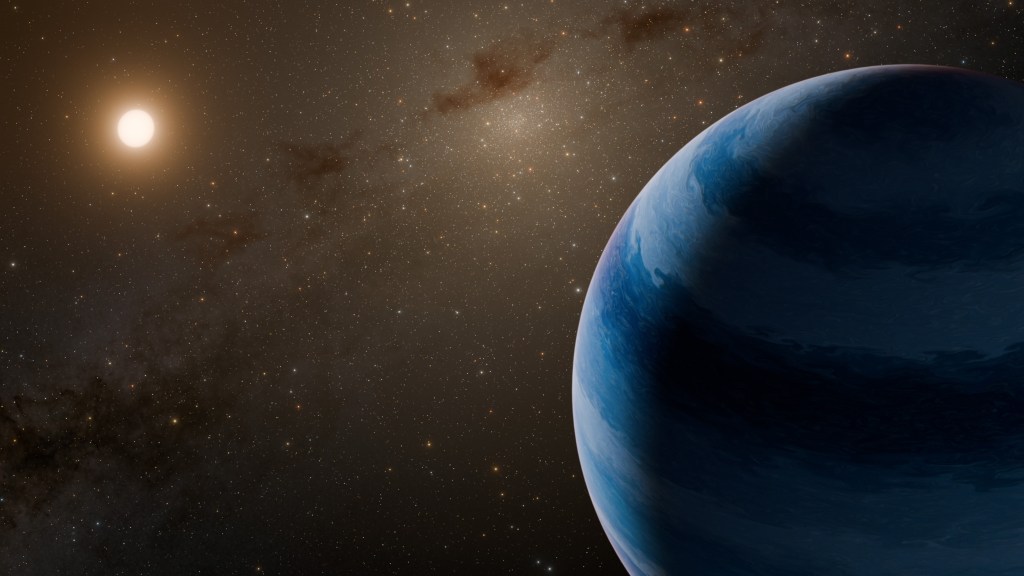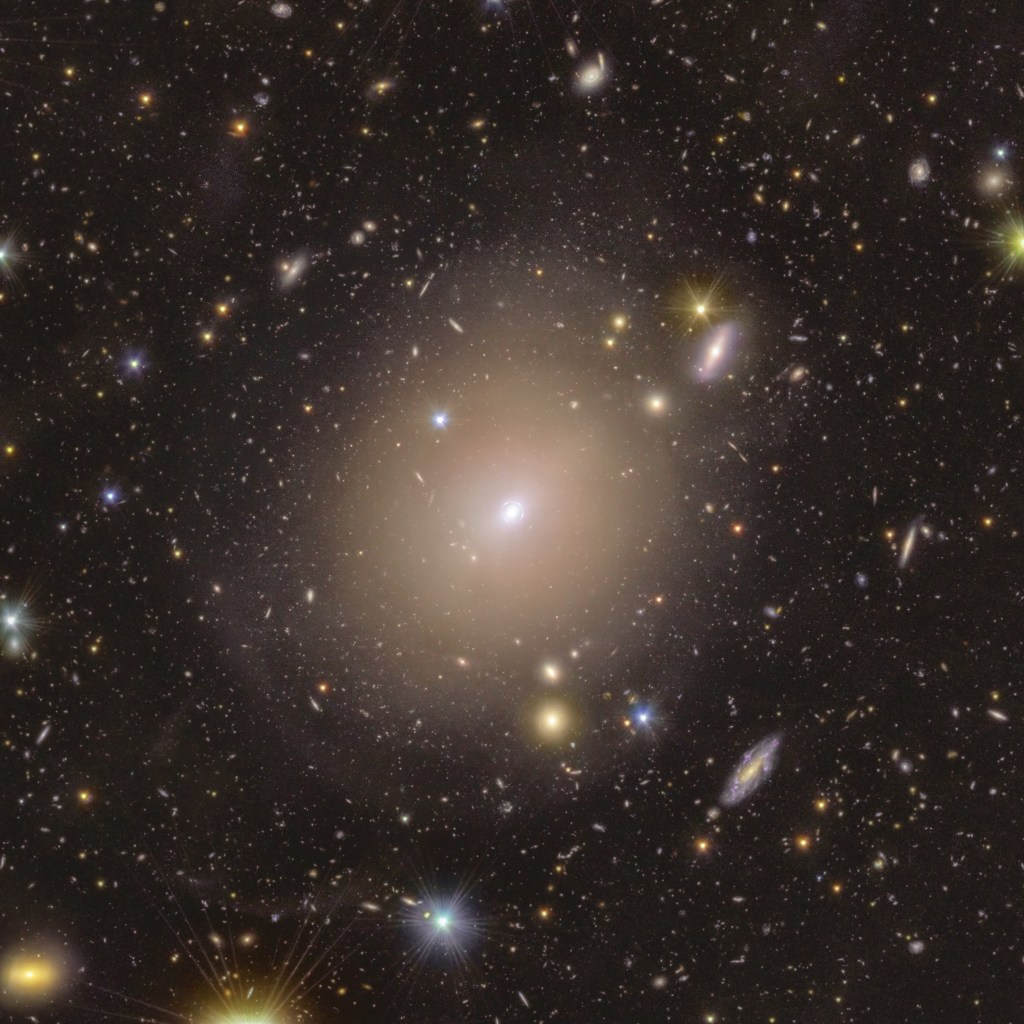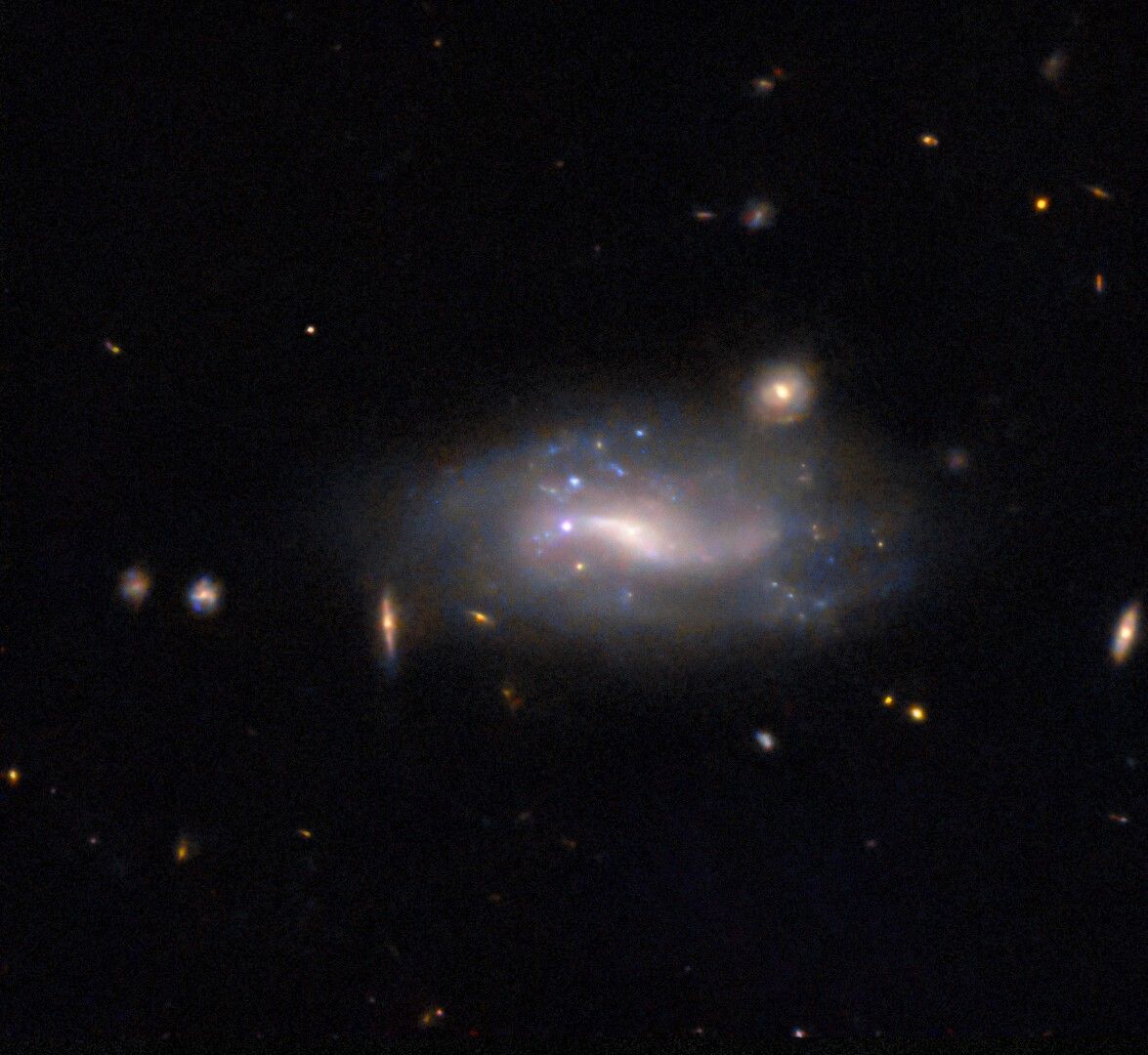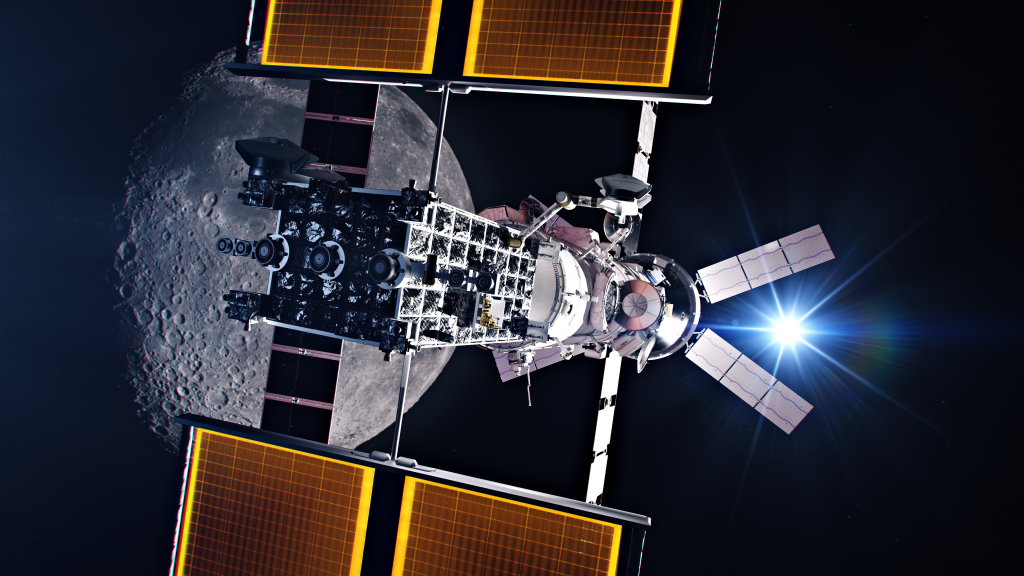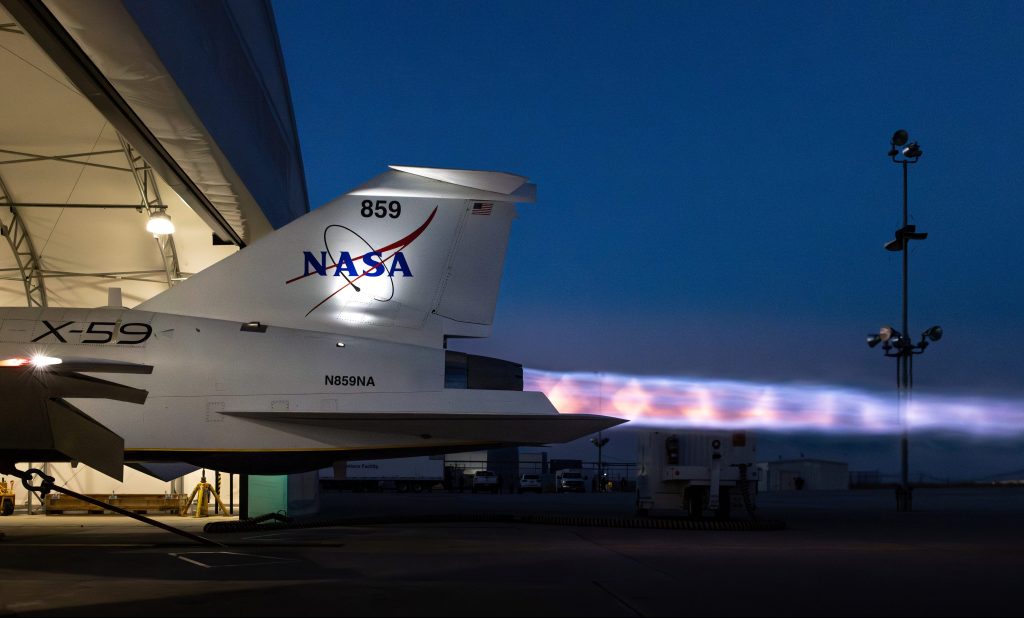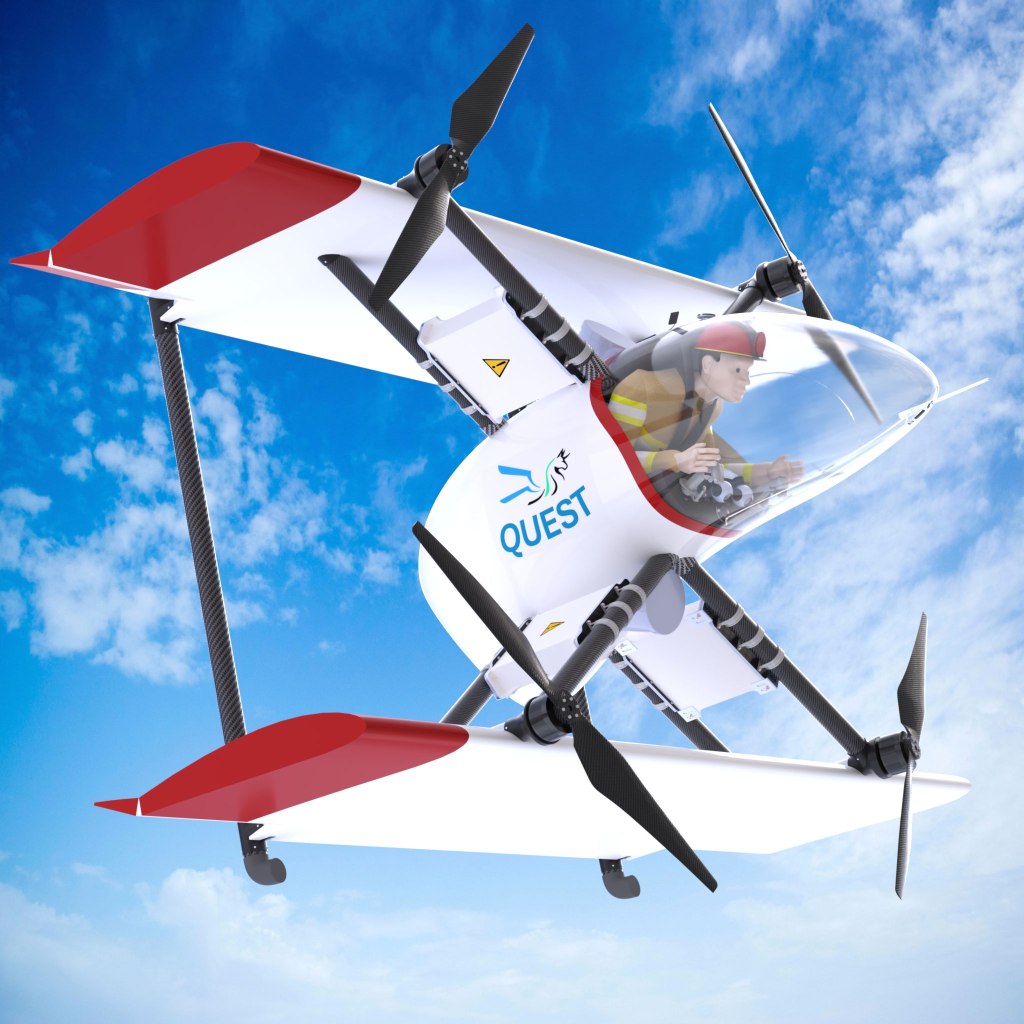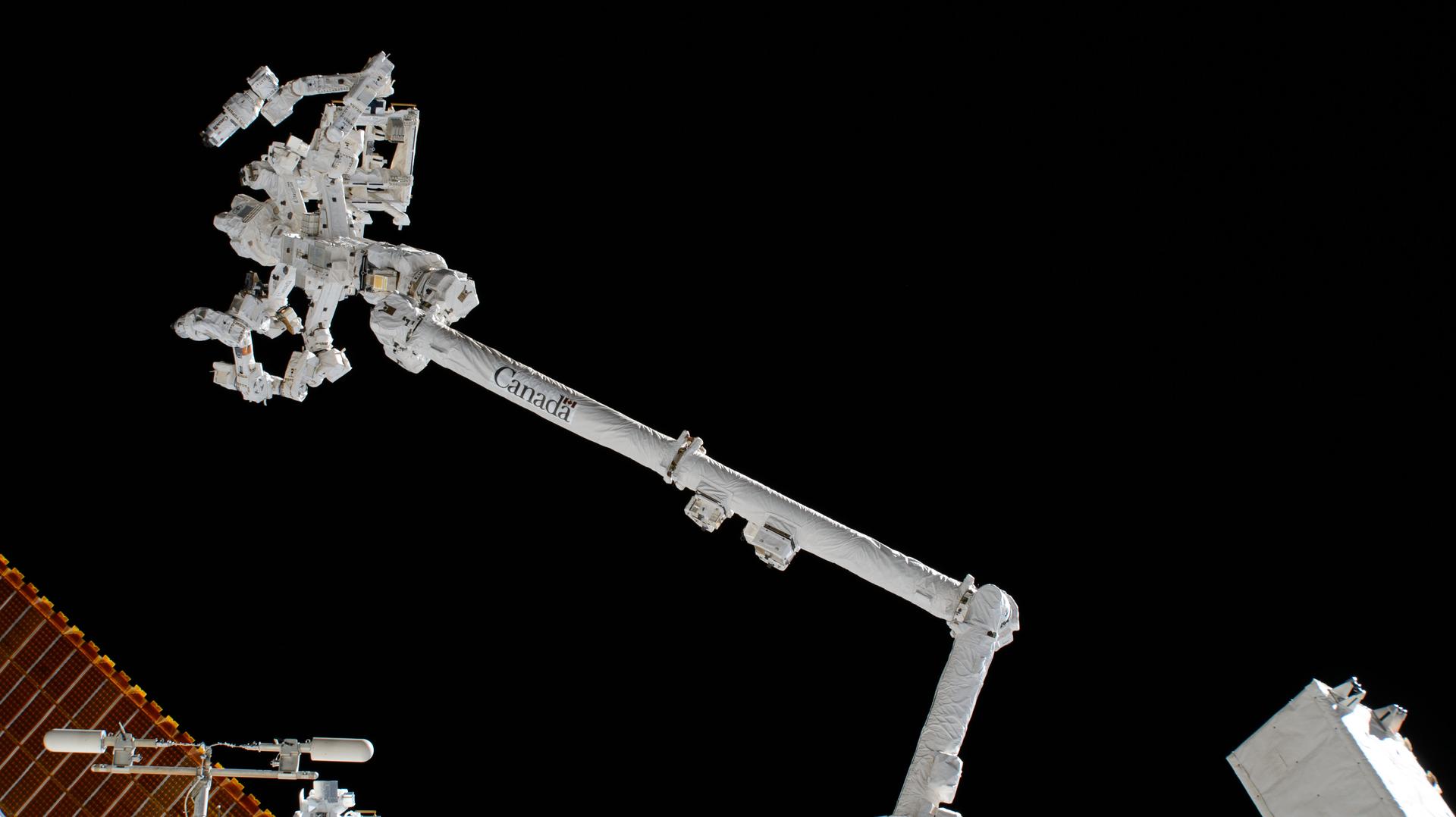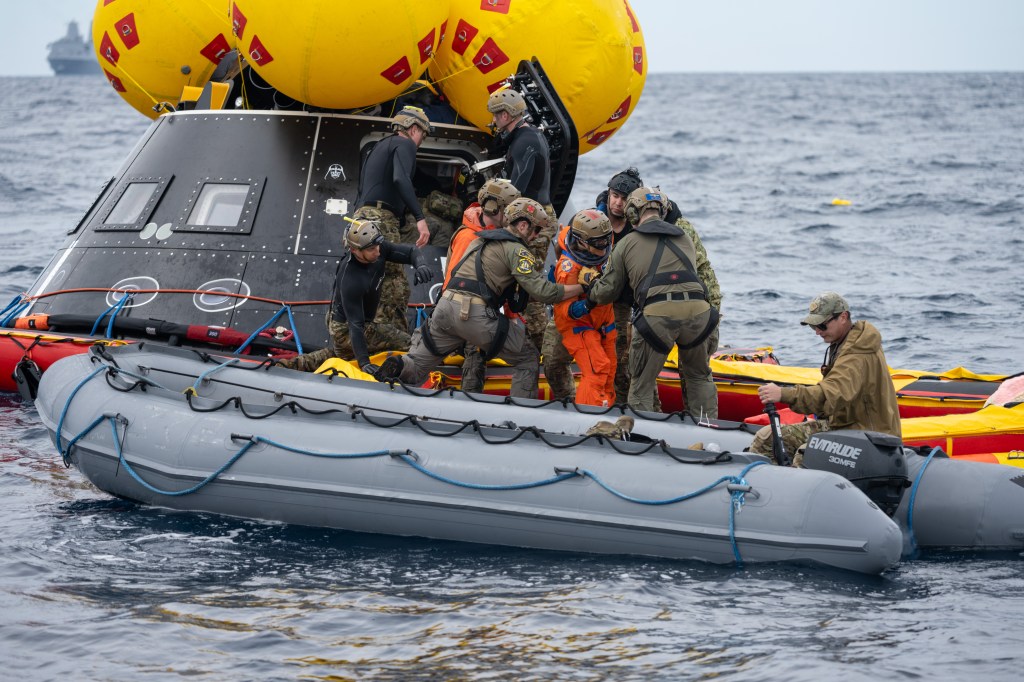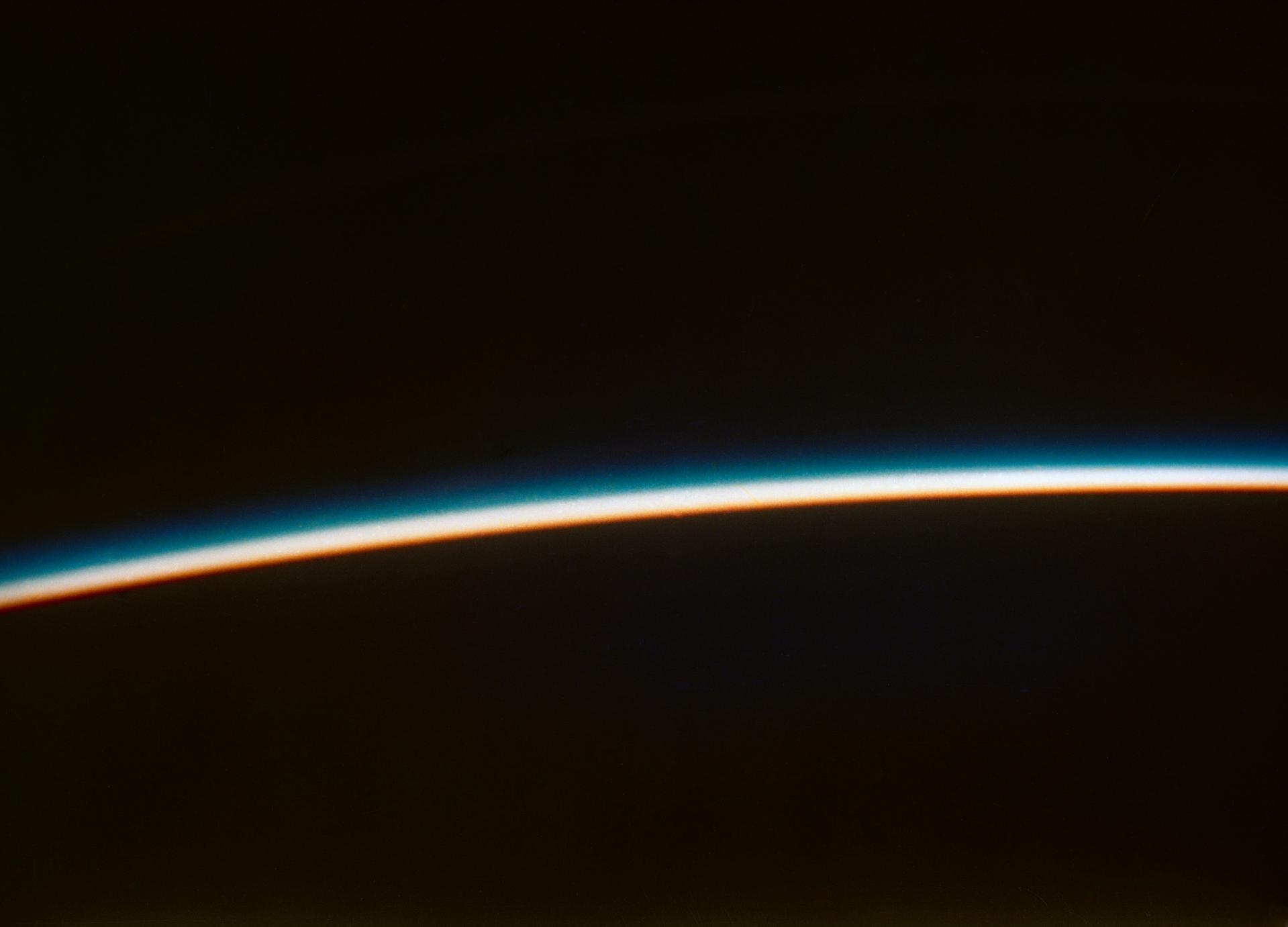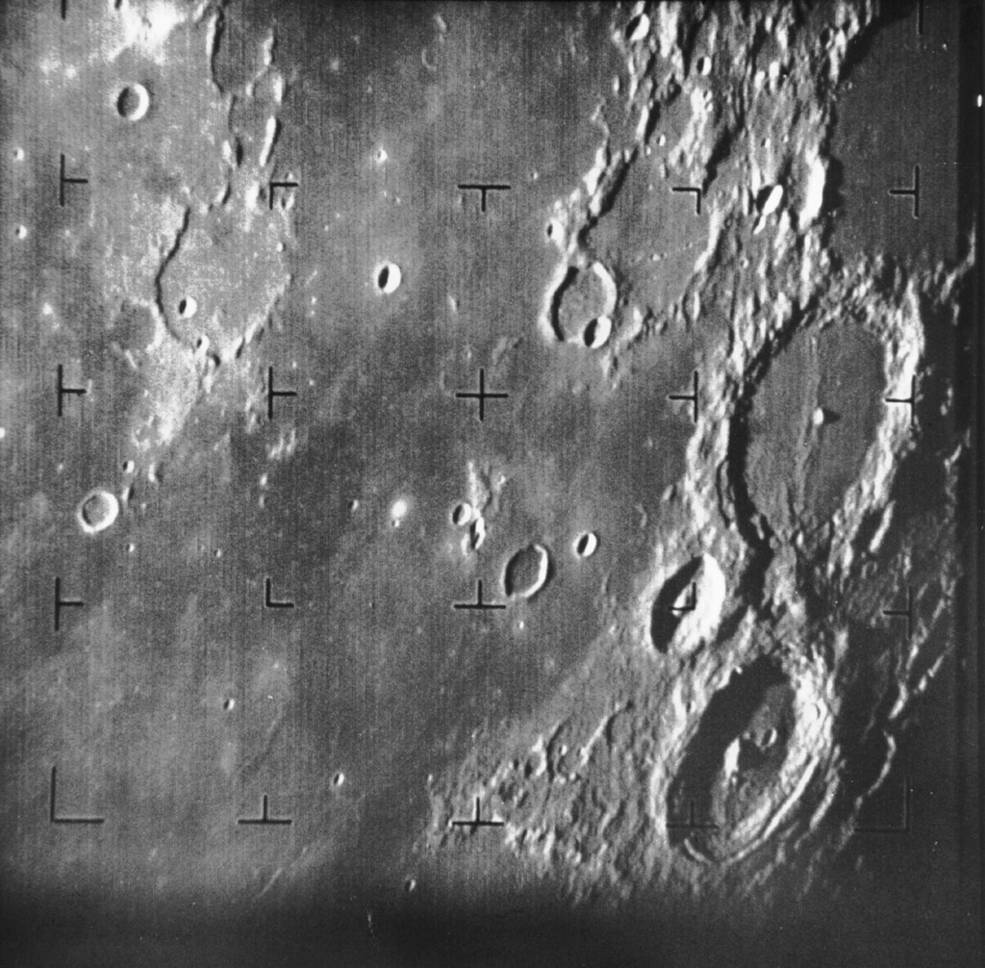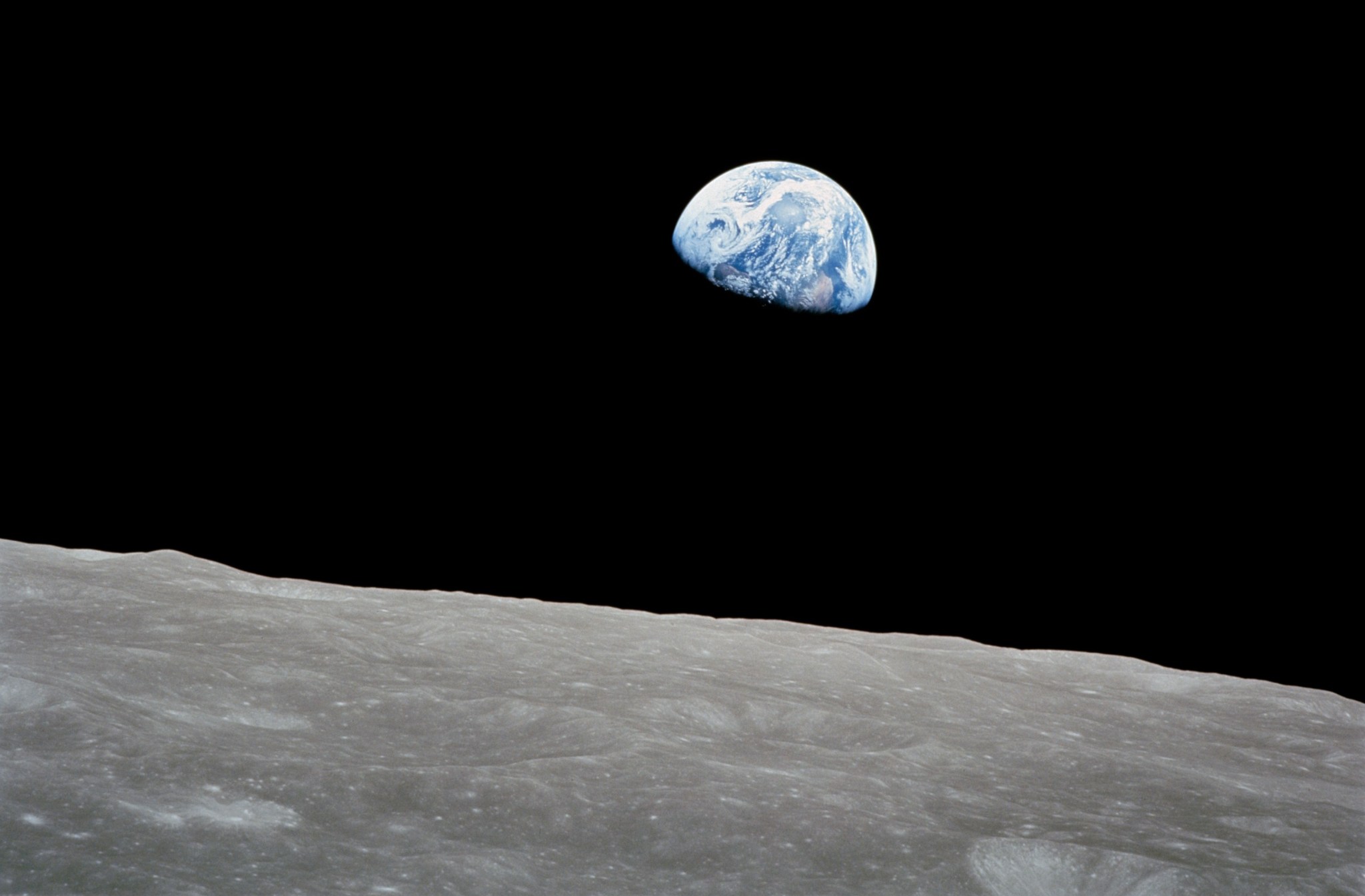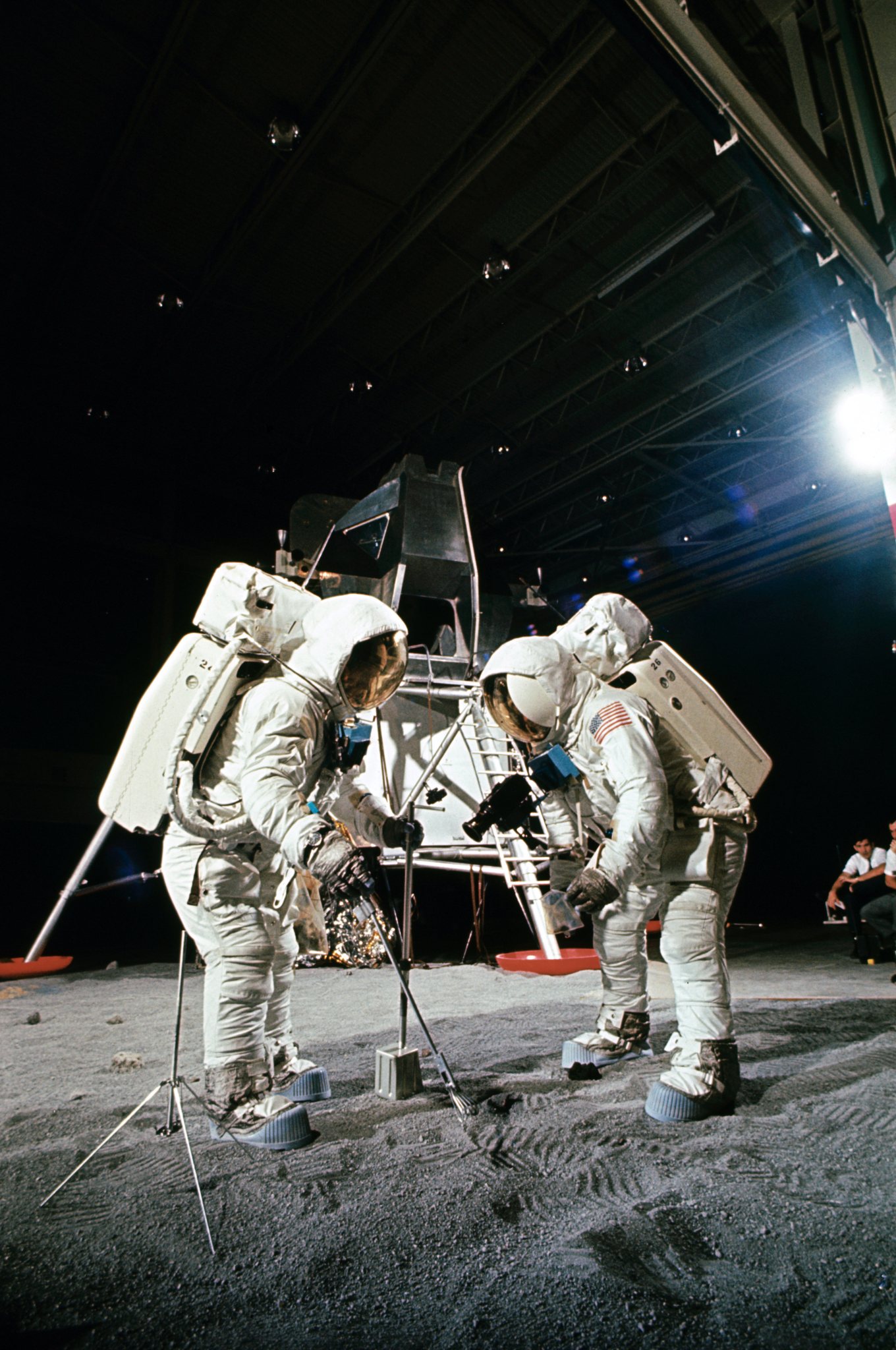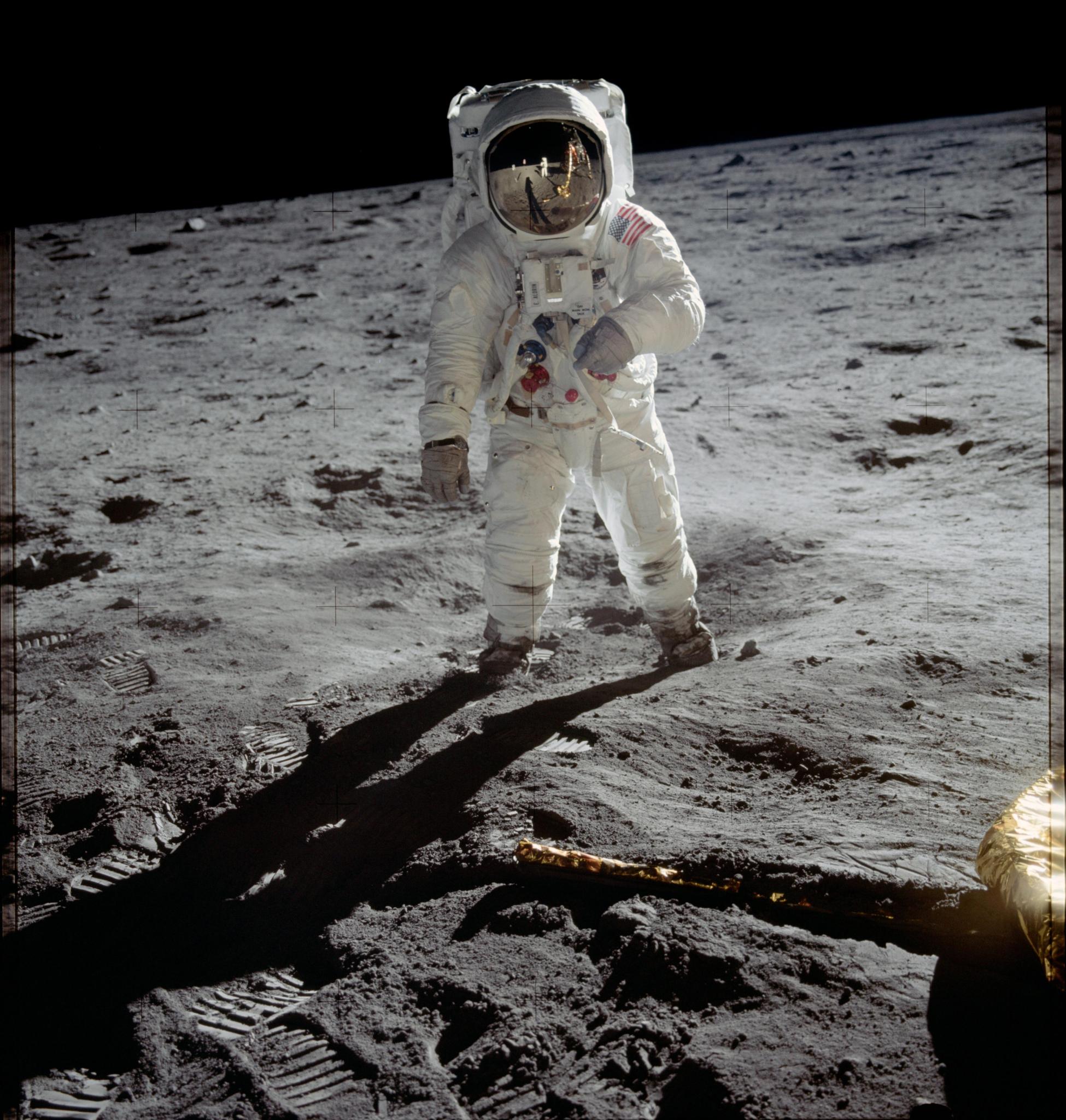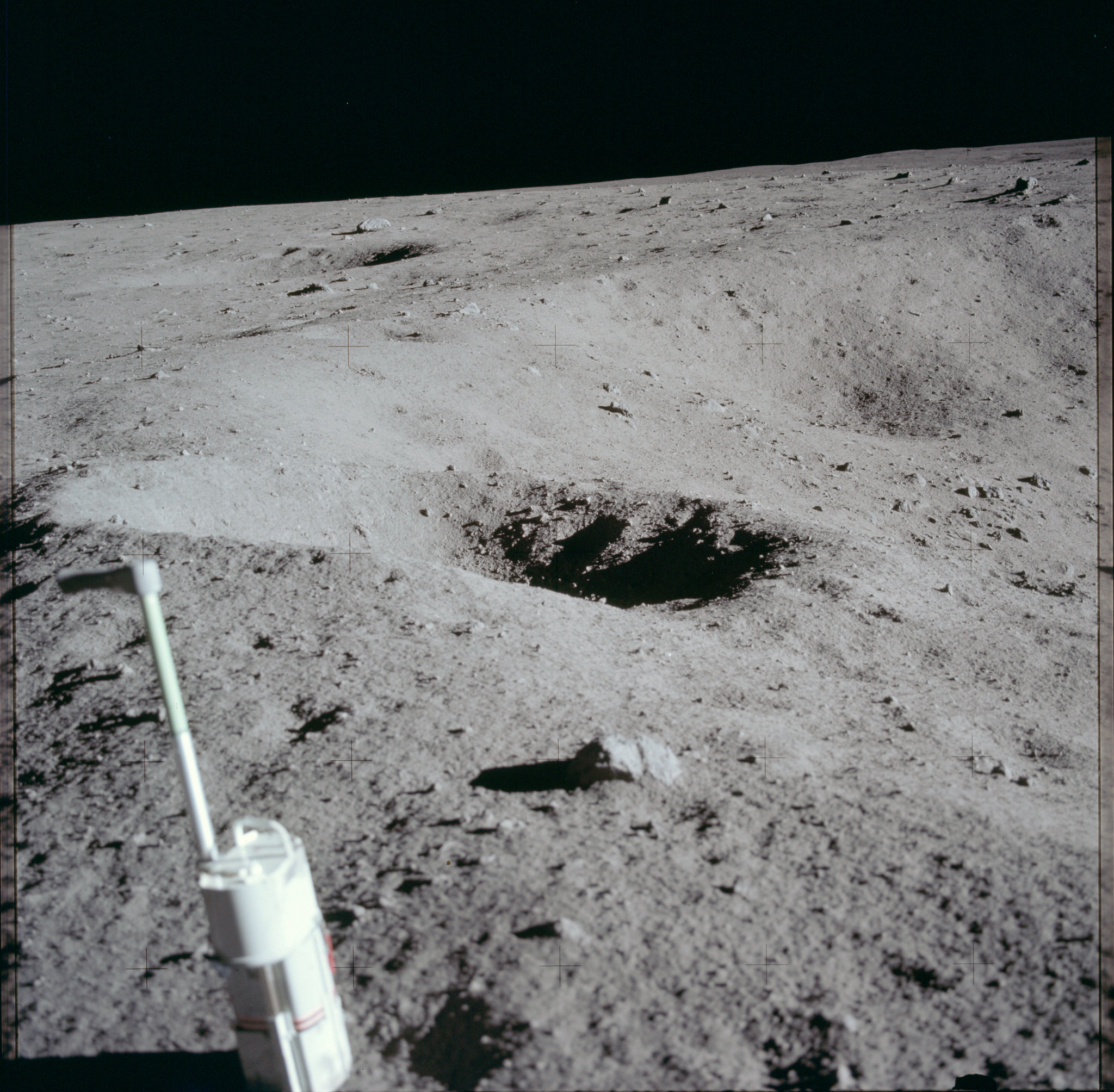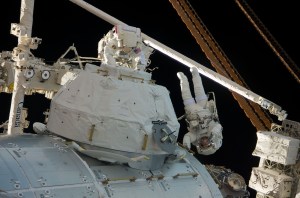Before Apollo
At the beginning of the space program hardly anyone thought of photographs from space as anything more than a branch of industrial photography. There were pictures of the spaceships, and launches, and of astronauts in training, but these were all pictures taken on the ground.
When John Glenn became the first American in orbit, bringing a camera was an afterthought. An Ansco Autoset 35mm camera, manufactured by Minolta, was purchased in a local drug store and hastily modified so the astronaut could use it more easily while in his pressure suit. At the time, everything that John Glenn did was deemed an experiment. At the beginning of the program, no one knew for certain whether weightlessness would prevent a man from seeing, or from breathing, or from eating and swallowing. Photography was deemed nothing more than a recreational extra.
Not only was little expected of those first pictures taken from space, but there was serious concern that taking pictures of other nations from orbit would be seen as an act of ill will and even one of war, as sovereign and sensitive nations might resent having pictures taken from orbit. But space photography developed quickly. Weather satellites permitted weather predictions as never before, saving lives and billions of dollars. In the first decade of the space program, satellites were orbited for Earth resources and for mapping. Satellites took over many of the intelligence gathering responsibilities that aircraft such as the high-flying U-2 previously provided.
Nearly 100,000 photographs taken by NASA’s lunar probes, Ranger, Surveyor, and Lunar Orbiter, helped to map Apollo’s landing sites. The first photographs from the Moon came in 1964 when Ranger 7 radioed photographs back as it plunged into the lunar surface, crashing and being destroyed in the process. Next, Surveyor probes landed softly on the surface. Beginning in 1966, the probes dug, analyzed, and transmitted pictures from the same height an astronaut would see as he was standing there. Then Lunar Orbiters methodically mapped much of the Moon, examining the candidate sites for manned landings. These spacecraft carried fully automated film processing laboratories. After processing, the film was scanned for radio transmission of the pictures back to Earth.
Unmodified Hasselblad 550C medium format cameras were first used on the last two Mercury one-man missions in 1962 and 1963. The Hasselblads proved the mainstay of the early space program and were used throughout the Gemini two-man spaceflights in 1965 and 1966. In addition to the excellent mechanical and optical properties of the cameras and their Zeiss lenses, the cameras were relatively simple to use, and film was pre-loaded into magazines that could easily be interchanged in mid-roll when lighting situations changed. In addition to the Hasselblads, on the second Gemini mission, history was made when the first picture of a spacecraft in orbit was taken by astronaut Ed White as he floated outside his spacecraft. He used a Zeiss Contarex 35mm camera mounted atop his gas-powered maneuvering gun.
Two human missions, Apollos 8 and 10, orbited the Moon before the Apollo 11 landing. On Apollo 8 human beings saw, with their own eyes, the Earth as a sphere in space. Few sights in human history have been as exhilarating as that first Earthrise over the lunar horizon. These new views of the Earth in space were an unforeseen revelation. Interest in ecology and the protection of the Earth’s environment can be traced to these first missions to another world.
On Apollo 8, Hasselblad EL electric cameras were used for the first time. The electric motor in these Hasselblads largely automated the picture taking process. The astronauts needed only to set the distance, lens aperture, and shutter speed, but once the release button was pressed, the camera exposed and wound the film and tensioned the shutter. Two Hasselblad EL cameras, each with a Planar f 2.8/80mm [normal] plus a single Sonnar f5.6/250mm [telephoto] lens and seven magazines of 70mm film, were carried. The cameras, film magazines, and lenses used on Apollo 8 had black anodized surfaces to eliminate reflections. Modifications to the cameras included special large locks for the film magazines and levers on the f-stop and distance settings on the lenses. These modifications facilitated the camera’s use by the crew operating with pressurized suits and gloves. Additionally, the cameras had no reflex mirror viewfinder and instead a simple sighting ring assisted the astronaut in pointing the camera.
Each film magazine would typically yield 160 color and 200 black and white pictures on special film. Kodak was asked by NASA to develop thin new films with special emulsions. On Apollo 8, three magazines were loaded with 70 mm wide, perforated Kodak Panatomic-X fine-grained, 80 ASA, b/w film, two with Kodak Ektachrome SO-168, one with Kodak Ektachrome SO-121, and one with super light-sensitive Kodak 2485, 16,000 ASA film. There were 1100 color, black and white, and filtered photographs returned from the Apollo 8 mission.
In addition to the Hasselblad cameras, Apollo 8 carried a black and white television camera, a 16mm motion picture camera, exposure meters, several types of filters, and other camera accessories.
Apollo 11
A comprehensive set of camera equipment was carried on board Apollo 11. This included two 16mm Maurer motion picture film cameras, a color television camera in the orbiting Columbia, and a black and white TV camera outside of the lunar module to transmit to Earth Neil Armstrong’s first steps on the Moon’s surface. A Kodak stereo close-up camera was used to film the lunar soil from only inches away. Three Hasselblad 500EL cameras were carried.
Two of the Hasselblad cameras were identical to those carried on the earlier Apollo 8 and 10 lunar orbit missions. During the Moon landing one Hasselblad was left aboard the Command Module Columbia, which remained in lunar orbit. Two were taken on the Lunar Module Eagle to the Moon’s surface.
The Data Camera used on the lunar surface during the Apollo 11 mission and later Moon landings was a 500EL with additional modifications. A transparent glass Reseau plate, or register glass, engraved with grid markings was placed between the film magazine and the camera body, immediately in front of the film plane. The plate is engraved with crosses to form a grid and the intersections accurately calibrated to a tolerance of 0.002 mm. The crosses were recorded on every exposed film frame. From the markings, it is possible to calibrate distance and heights in photos taken either on the lunar surface or from space. Such markings were not new or unique to the space program. They were commonly used for large format scientific and aerial photography prior to the Moon landings, when the large size of the photographic negative could be distorted either during exposure or the printing process.
When film is normally wound in a camera, static electricity is generated on the film surface. This electricity is dispersed by metal rims and rollers, which guide the film, and by humidity in the surrounding air. In the lunar surface camera, however, the film was guided by the Reseau plate’s raised edges. As glass is a poor electrical conductor, and with the absence of surrounding air, the charge built up between the glass surface and the film could become so great that sparks could occur between the plate and the film. In order to conduct the static electricity away and prevent sparking, the side of the plate facing the film was coated with a thin transparent conductive layer and silver deposited on the edges of the conductive layer. The electrical charge was then led to the metallic parts of the camera body by contact springs.
The outer surface of the 500EL data camera was colored silver to help maintain more uniform internal temperatures in the violent extremes of heat and cold encountered on the lunar surface. Lubricants used in the camera mechanisms had to either be eliminated or replaced because conventional lubricants would boil off in the vacuum and potentially could condense on the optical surfaces of the lenses, Reseau plate, and film.
Two film magazines for the lunar surface Hasselblad 500EL data camera were carried for use on the Moon’s surface. Thirty-three rolls of the same film types as used on the earlier missions were carried on the Apollo 11 mission. The film used for Apollo 11 was loaded and several test shots exposed prior to flight. When the film magazines were returned for processing after the mission, the test shots were cut off and processed first. These were compared against accurate color charts to ensure that there would be no defects in processing the remainder of the film and that the colors would be most accurate.
Each film magazine was finished in the same silver color as the camera body. The film magazines were each fitted with a tether ring. To the ring, a cord was attached that permitted the entire camera to be lowered from the lunar module cabin to Neil Armstrong on the surface using a clothesline-like arrangement. The exposed film magazines were lifted from the surface in the same manner. The camera and lens were left behind and still rest on the Moon’s surface at Tranquility Base.
The Apollo 11 Kodak Stereo Close-Up Camera
Seven months prior to the Apollo 11 mission, a new camera was commissioned by NASA. The camera would be used by the crew to take close-up stereo views of the lunar soil and rocks. The camera had a shutter speed of 1/100th of a second, an aperture of f/22.6, film was held approximately 10 inches from the lunar surface, and lighting was provided by an integral electronic flash.
The camera was designed for ease of use by the astronaut in his bulky pressure suit. The camera was rested on the soil and the astronaut would simply press down on a trigger on a long handle to expose the frames. Each exposure resulted in two side-by-side photographs of the same area of the surface. The surface photographed measured three inches by three inches. The size of the exposed film was one inch square.
After Apollo 11
Five more flights landed on the Moon after Apollo 11. On all, the photographic equipment and films were similar to that taken on the first landing. On Apollo 15, the 250mm telescopic lens was added to the Hasselblad lunar surface complement. By the time of Apollo 17, a total of 18 rolls of film were taken to the lunar surface.
Astronaut Training for Lunar Photography
The Apollo astronauts underwent intensive training in preparation for their Moon explorations. Over the several years prior to the Moon missions, scientific and photographic training was provided. Astronauts were encouraged to take training cameras on trips to become more familiar with the camera operation and to enhance their photographic technique. Tutorials were provided to the crews on the equipment, its operation, as well as on the scientific purposes. The crews visited geologic sites in Nevada, Arizona, and Hawaii, frequently simulating their lunar traverse, completely outfitted with sample bags, checklists, simulated backpacks, lunar rock hammer, core-sampling equipment, and typically using Hasselblad EL cameras similar to those they would use on the Moon. As the use of the camera was mostly automated, the most crucial training was in pointing the camera which was attached to their chest control packs for the suit’s environmental control system. The astronaut would point his body in order to aim the cameras. Films taken during the practice exercises were processed and returned to the crewmen who would study the results.
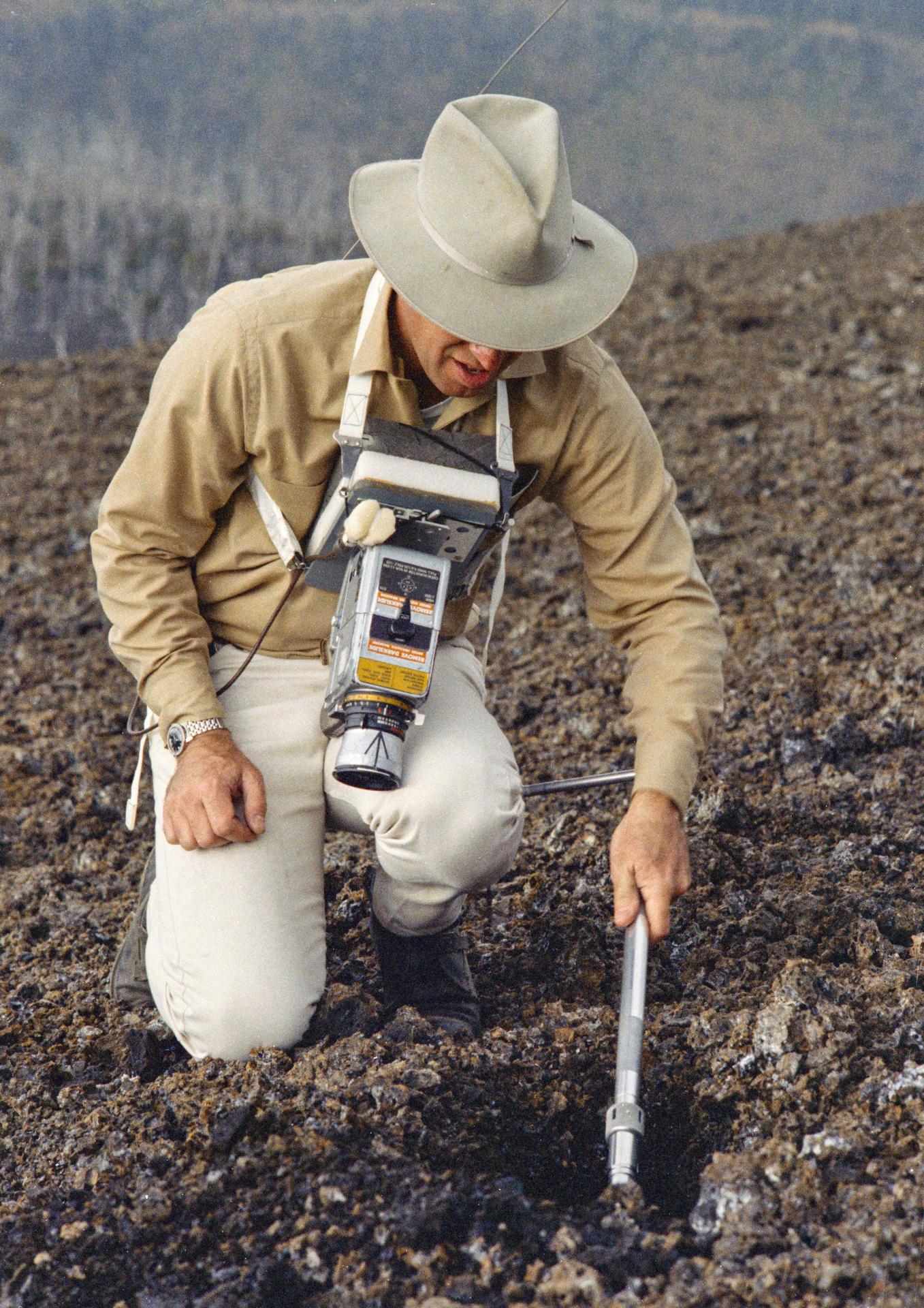
The Meaning
From December 1968 to December 1972, twenty-seven astronauts traveled to the Moon and twelve walked upon its surface. There were nine voyages across the quarter million miles. The treasures of Apollo included the samples of the lunar surface and the photographs the astronauts took. The photographs of Apollo, today, three decades later, help us to relive the experience.


